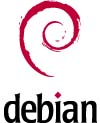The right Linux distribution for you
Choosing the right Linux distribution that suites your taste.
Table of contents
If you are new to the world of Linux, first of all, welcome to the world of free and open-source software.
Let us understand what Linux is. Linux is a kernel on which operating systems are built. In general, a Linux operation system is made up of three parts; the kernel, the shell and the programs. Linux Torvalds began a project in 1991 that later became the Linux kernel, The shell is the Linux command line interpreter. It provides an interface between the user and the kernel and executes programs called commands. Linux includes a variety of small programs to meet various needs, these programs can be mixed and matched in different ways to perform different tasks.
Now that we have some knowledge of what we are dealing with let us jump right into choosing our Linux distribution.
There are a lot of distributions to choose from. But they can be classified by the package manager they use, the standard packages they come with preinstalled, and the distribution they are forked from. Alternatively, they can also be classified by, rolling release and fixed release distributions.
In a Linux distribution that follows a fixed release model only security updates are released frequently, all the software updates are held back and are released only with the new version of the distribution. In a rolling release model, updates for every package/software are constantly released as the developer releases them along with the base system.
Now that you know how the distributions are classified, you kind of have an idea of which classification suits your taste.
Below is the list of some of the distributions according to the above classification.
Fixed Release distributions
Debian

Debian is one of the most stable Linux distributions out there, it was developed by community supported Debian project and was established by Ian Murdock on August 16, 1993. It has three branches, unstable, testing and stable. The unstable branch follows a rolling release model, but the testing and stable follow a fixed release model. Debian uses the apt package manager which manages remote repositories and resolves dependencies, dpkg (Debian package manager) works under the hood of apt and is commonly used to install packages that are already in your system.
Ubuntu
Ubuntu is a Debian-based distribution, it is one of the most popular distributions, and it has a big user base, so if you face any issues, there is most probably, a solution waiting for you. It is a beginner-friendly distro, and the documentation and other forums are also pretty beginner friendly. Ubuntu uses, the apt package manager. A new version of Ubuntu is released every 6 months. It releases an LTS (long-term support) version which is supported for five years.
Fedora

Fedora Linux is maintained by Red Hat. It adopts new software before any other fixed-release distributions. It uses the dnf package manager. You get the latest packages (not the cutting edge), along with stability.
Rolling Release distributions
Arch Linux

Arch is the most popular rolling-release distribution out there. I use Arch btw. It offers the latest and greatest software available. If you want to be on the cutting edge, Arch Linux is your distribution of choice. It is said that you need to be a bit experienced with Linux to use Arch Linux, and it's true up to some extent, as it can be overwhelming at some points if you are not familiar with working with the command line. Arch uses the Pacman package manager, and then the (AUR) arch user repository, which makes almost every software available with the help of the community.
Manjaro

Manjaro is an arch-based distribution. It uses Pacman as a package manager, and it also has the AUR. It is easier to install than Arch it uses a Graphical installer. Manjaro can be the distribution of choice if you want the ease of use along with the latest software. (Manjaro's repositories stay a bit behind Arch repositories)
Debian Testing

Remember when we mentioned Debian testing in the first suggestion? It might sound like it is a beta branch, as it is called testing. But it comes in between unstable and stable. One can enjoy the rolling release model while staying in a Debian environment.
Conclusion
So these are some of the distributions you can consider. Just remember, don't hesitate in trying out new distributions be it in a virtual machine. This way you will get familiar with the environment and it will be easier for you to choose the right distribution for you.

